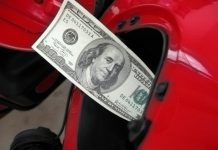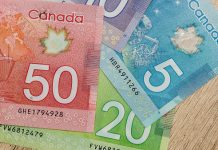The equity marathon that kept going on for questionable reasons since Tuesday ended in tears yesterday, with the arrival of a new set of economic data that crushed the optimistic rhetoric of soft landing.
Released yesterday, the latest data showed that US producer price inflation rose more than expected on a monthly basis, both for headline and core data, and the core PPI eased less than expected – similar to what we saw in the CPI data, BUT the Philli Fed manufacturing index was a disaster with an unexpected drop from -8.9 to -24.3 – the expectation was a -7.4 print.
So that crushed the idea that the economy is strong, without however fueling the Federal Reserve (Fed) cut expectations, as the slowdown in inflation needs to be addressed for some more time.
And of course, comments from two Fed members were the last nails in the coffin yesterday. Loretta Mester said that she would go for a 50bp hike if she had the right to vote in the latest FOMC meeting. And James Bullard said that he would back a 50bp hike in March, if he could vote this year.
Happily, for the equity bulls, both Mester and Bullard don’t vote this year. But their non-voting status didn’t make their comments sound any less scary.
As a result, the odds for a 50bp hike at the March FOMC meeting stand now around 18%, whereas this probability was just around 9% at the start of this week.
Money markets see the Fed funds rate climb to 5.24%, compared to around 4.90% just two weeks ago.
And the treasury yields extend their advance on the back of stronger-than-expected inflation and way-softer-than-expected Philly Fed index.
The US 2-year yield consolidates a touch below 4.70%, while the 10-year yield hit 3.90% for the first time this year.
The S&P500 gave back nearly 1.40% yesterday, while the more rate-sensitive Nasdaq fell nearly 2%.
US futures hint at further selloff before the weekly closing bell, as in the absence of important data, investors will have to digest the week’s mixed data. And the bad news is, the European stock traders will also have to think whether a further rally in European stocks makes sense, when the EURUSD is trending lower.
The EURUSD extended losses to 1.0630 on the back of a broadly strong US dollar, and the dollar-yen rallied past the 134.80 level in Japan today, despite the news that the Bank of Japan’s (BoJ) next move under the leadership of the new Governor Ueda would be to scrap the non-sense YCC policy and start tightening by July. From a technical perspective, the 135-137 range, which includes a psychological mark, the major 38.2% Fibonacci retracement and the 200-DMA could be interesting top selling levels for those who bet that the Japanese bankers will finally come back to their senses.
Zooming out, the strong US dollar is responsible for most FX moves right now. The US dollar index cleared 104 resistance, which was the minor 23.6% Fibonacci resistance on September to February selloff, and stepped back into the long term bullish trend.
Gold fell to $1823 per ounce on the back of higher US yields – that increase the opportunity cost of holding the non-interest-bearing gold, and the stronger US dollar.
Rising tensions between US and China somehow helped gold eke out small gains yesterday, especially after Beijing said that they were banning Lockheed Martin and Raytheon for selling arms to Taiwan.
But happily for all of us who don’t want to see more geopolitical tensions, but unhappily for all those who have a long position in gold, US President Joe Biden said he intends to speak with Xi about the whole balloon tragedy. We will see if it helps.
For now, gold is headed lower, and the next key support stands at $1814 per ounce, which is the major 38.2% Fibonacci retracement on the November to February rebound, and slipping below this level will send the precious metal into the medium-term bearish consolidation zone with prospect of a deeper dive.
In cryptocurrencies, Bitcoin eased after hitting the $25K mark yesterday. We notice a significant fall in correlation between Bitcoin and Nasdaq 100 stocks lately, which could spare Bitcoin from a further selloff if things get uglier in the traditional markets.
But will things get uglier, is yet to be seen, because we have seen evidence of a very strong optimism in the markets over the past few weeks, that no one, or no data has been able to hammer for good.
No landing?
The early-year optimism gave birth to the new concept of ‘no landing’.
No landing is the scenario where inflation remains high, but the economy remains strong as well.
And unfortunately, it’s as realistic as a no landing scenario in a commercial plane. At some point, there will be no fuel, and the plane will have to land. If both the economy and inflation is strong, that means that the Fed could continue raising the rates until the economic strength gives in. And rising Fed rates will mathematically hit equity valuations. So that no landing scenario is nothing more than wishful thinking.













